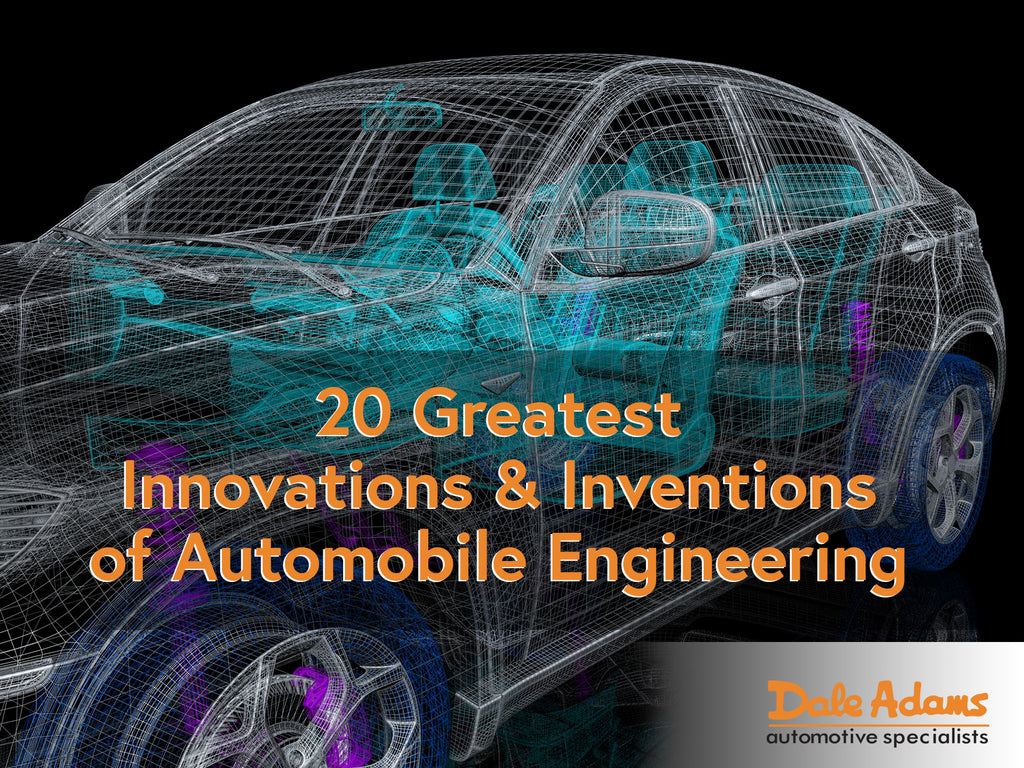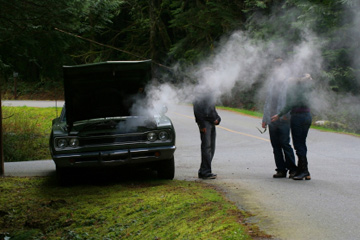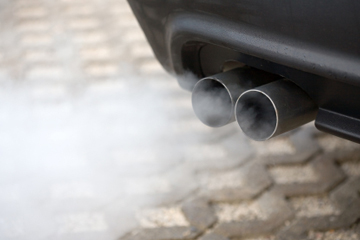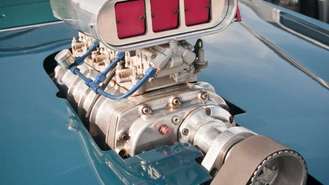Many men have the classic car bug hit them at some point in life. Maybe they want that car they dreamed about in high school (or actually drove, and still miss). For others, it’s the idea of taking a rundown classic and restoring it to mint condition. Some guys just like buying investment-grade cars with hopes of profiting off them in the future. No matter what your reasoning for wanting a vintage automobile, before you buy one on a whim, let’s dig into the reasons you might buy a vintage car, along with developing a plan for getting the best car for your budget and lifestyle.
Why Are You Buying a Vintage Auto?
As noted above, people buy vintage vehicles for all kinds of reasons, and being realistic about why you are buying a classic car is essential if you want it to be an enjoyable experience rather than one filled with rancor and regret.
The key is to buy for all the right reasons for you.
For example, you might want to get a 1965 Mustang convertible to go get milkshakes with the family. A rust-bucket/project car, assuming you have the time, money, and dedication to restore it, is going to take several years before it is roadworthy. By that time, your kids are in high school, and they have no interest in hitting the malt shop with Mom and Dad. In this case, a turnkey, ready-to-drive option may be the best bet for you.
If you’re someone with lots of spare time (and perhaps money as well) who enjoys fixing anything mechanical, a full restoration project might fit your profile.
If you want to buy a unique car in immaculate condition with strong investment potential, that car is going to be doing a lot of sitting without much tinkering or driving required. But as I’ll explain next, it’s important to understand that most classic cars don’t actually turn out to be a good investment.
Most Classic Cars Are Not an Investment
We’ve heard of the guy who doubled his money on a car sitting in his grandmother’s garage, but most attempts to flip a vintage vehicle for profit don’t turn out that way.
The truth is that these old cars are simply that: old cars. They have carrying costs: storage, maintenance, insurance, etc. Depending on the car, these costs can run hundreds to thousands of dollars per year.
And that’s not to mention restoration costs, of both money and time. That Mustang we referenced earlier might require $15,000 in work to get it in the condition you desire and it will still be worth about the same price you paid for it. A 1960s Corvette might cost $40,000, require $60,000 in restoration work, and now be worth $70,000-$90,000. Even if you do the repair work yourself, you might save tens of thousands of dollars in labor costs, but spend hundreds of hours in the garage away from your family. This begs the question: What is your time worth? If you like cranking a wrench on the nights and weekends, go for it. If you are thinking you will spend a couple hours a week working on a project car, you could lose interest long before its appreciated in value.
If your plan is to buy an investment-grade vehicle that you don’t plan to drive but will instead park in a temperature-controlled garage, waiting for demand to push the price up, do your research carefully on what car you buy. For example, many cars from the 1950s and 1960s have had no price appreciation for a decade. One theory is that the collectors, generally aged 60+, who used to desire these cars are either dying or downsizing their collections. Meanwhile, cars that were popular in the late 1970s to 1990s are experiencing price appreciation as the children of this era approach middle age with discretionary income to burn on collector cars.
Where to Buy Your Throwback Machine
Buying a classic car is not the same thing as buying a brand new Honda from the local dealer. You can’t just walk into a dealer, pick your comfort package, engine size, interior/exterior colors, and drive home that day with exactly what you want. To find the car you really desire, it’s going to take some work.
When buying a used car (emphasis added because racing stripes and polished wheels may make it seem new in your mind), constantly remind yourself of the phrase caveat emptor — “buyer beware.”
Buying at Auction
Classic car auctions are sexy. The crowd, the excitement, and the potential to get a deal on your dream machine all sound appealing. Here are some pros and cons for going this route:
Pros:
- Auctions do a great job bringing in high-end cars that may have never sat in a consignment dealer’s showroom. Some of the most desirable (i.e., expensive cars) have sold at auction rather than by private party or dealer.
- Auctions can often be accessed via phone or internet, giving you the opportunity to buy a car from the other side of the world.
- You can get a deal on a car with a no, or low, reserve. If only a few buyers bid on the car, you could walk out with a steal.
Cons:
- The buyer has limited options for inspection. Aside from walking around the car and maybe hearing it turn over, the chance of a complete inspection is non-existent. Only after you buy the car will you begin to discover all the surprises in the car you just purchased, and remember there are no “do-overs” at auction.
- The seller and buyer premiums added on to the sale price can tack on 10-25% in fees to the price of the car compared to a private party transaction.
Buying From a Dealer
Just like people, there are good dealers and bad dealers. Most classic car dealers run a consignment shop, where private car sellers leave their cars on the lot for sale. In return for handling the advertising and drumming up a buyer, the dealer receives a percentage of the sale proceeds. Some dealers will buy the car directly from the seller and attempt to flip it for their own profit.
Pros:
- Good dealers will run their inventory through an inspection before selling it. A reputable dealer will have no problem with you conducting an in-depth inspection of the car along with bringing in an outside inspector to verify that the car they advertise is the one you are buying.
- There’s good negotiating power. The dealer will try to get you to come up on price, but they’ll also try to get the seller to come down on price; they want to get the deal done. This is a negotiation, so do not be afraid to go in 20-25% below the asking price when starting out.
Cons:
- Dealers are in the business of turning over inventory. They often do not have intimate knowledge of the car’s history outside of what an inspection might garner.
- Dealers are middlemen. This means you indirectly pay a higher price because the seller will be paying a commission of 10-15% of the total sale price.
Buying From a Private Party
This method takes a lot more work than buying from a dealer or auction, but you can get a great deal on a classic car if you put the time into your search.
Pros:
- You deal directly with the seller. Oftentimes, they will be long-time owners, or at least more intimately know the history of the car. Some of these owners look at selling their car as giving away a child and want it to go to a good home. These collectors are the ones you want to buy from because the car’s condition will generally reflect the seller’s passion.
- You can get a much better price here without the fees of a dealer or auction house acting as a go-between.
Cons:
- This method takes work. You need to scrounge for sale ads on every car site you can find. Many sellers only list on 1-2 sites and assume that is good enough to market the car. Unless you are searching all the classic car classified sites, you might miss your deal.
- You might be more likely to blindly trust a passionate private seller. Each claim the owner makes about the car should be verified, if possible. If the deal does not pass the smell test, keep moving. No one is going to sell you a rare 1970 G.T.O. Judge for half off market prices just to avoid paying auction or dealer fees. What he is probably selling is a G.T.O. he’s made to look like a Judge in order to outsmart an uneducated buyer.
Use an Inspector Whenever You Can
When you’re buying from a dealer or private seller, and have the possibility of bringing in an inspector to look at the car, it really behooves you to do so.
An inspector acts as a second set of eyes that will make sure the car is exactly as described in the dealer’s sales literature or private owner’s claims. An inspector also functions as an important reality check: reining in your emotions is important to make sure you’re not overcome with the excitement of getting a classic car and end up with an overpriced toy needing more work and money than you’re comfortable with.
To find a good inspector, ask for recommendations at local car clubs or classic car dealers. Another option is calling a restoration shop that specializes in the car you are buying and hire them to do the inspection. Even if the shop can’t do it, they may be able to suggest someone who could.
In addition to hiring an inspector, you will also be well served by taking the car to a mechanic who can make sure it runs correctly too.
A Short Word on Prices
Classic cars come in all prices and conditions. You can pick up a near-mint condition Model T for around $10,000-$15,000. You can’t even find a project Porsche in that price range.
As a broad rule, more money spent upfront will save you gobs of money throughout the life of the car. As you scroll through classic car ads, you will often see statements such as “$75,000 invested, asking $45,000 or best offer.” Is the seller lying? Probably not. Restoration projects, especially those done at professional shops, involve hundreds or thousands of labor hours plus parts. Once the work is done, the owner may drive it around for a couple years, get bored with it, and dump it on the market. This is where you move in to save yourself thousands of dollars.
A collector car usually has no functional or practical value. Just like you wouldn’t depend on a 1982 Commodore 64 for finishing your work report, you’re not going to jump in your 1982 DeLorean DMC-12 to pick up your son from basketball practice in the middle of a snowstorm. In many ways classic cars are valued and priced the same way as other fine art is: condition and demand. Scarcity may add to the allure of a car, but does not always guarantee a high price. Compare this to how your kindergartener’s art project is one-of-a-kind, but won’t be on the block at Sotheby’s next to a Klimt or Dali.
What Car to Buy — A Few Ideas for Starters
Thanks for reading!
Dale Adams








































 Drivers of race cars need to often decelerate from speeds of 250km/h to 80km/h around sharp corners, so quick braking is essential. For the average citizen, quick braking matters not for the finesse of turning around bends (although it is impressive), but to avoid losing control of your car or prevent a rear-end collision. A second can mean the difference between escape or impact. Braking with the right usually wastes that precious fraction of time, which often translates to a distance of 30 – 50 feet travelled. Left-foot braking, however, cuts that time down by several seconds. In turn, you stop much faster than you would with traditional braking.
Drivers of race cars need to often decelerate from speeds of 250km/h to 80km/h around sharp corners, so quick braking is essential. For the average citizen, quick braking matters not for the finesse of turning around bends (although it is impressive), but to avoid losing control of your car or prevent a rear-end collision. A second can mean the difference between escape or impact. Braking with the right usually wastes that precious fraction of time, which often translates to a distance of 30 – 50 feet travelled. Left-foot braking, however, cuts that time down by several seconds. In turn, you stop much faster than you would with traditional braking.









 You need to know the make and model of your car, and the year, size and type of the engine. Superchargers are available for many different types of engines, and you will need this information to find the right types of superchargers or blower kits for your car.
You need to know the make and model of your car, and the year, size and type of the engine. Superchargers are available for many different types of engines, and you will need this information to find the right types of superchargers or blower kits for your car. You have three basic options for choosing a supercharger for your car. Centrifugal chargers are best for cars that are going to be used for racing. These aren't as popular because of the expense and skill required for installation. A blower kit is easier to install, and will give more efficiency while offering moderate gains in horsepower. These kits are popular for those who want to drive their cars and keep them street legal. Think about what kind of investment you want to make, what you want to get out of the supercharger, and how much work you want to put into the installation before you choose the best system for your car.
You have three basic options for choosing a supercharger for your car. Centrifugal chargers are best for cars that are going to be used for racing. These aren't as popular because of the expense and skill required for installation. A blower kit is easier to install, and will give more efficiency while offering moderate gains in horsepower. These kits are popular for those who want to drive their cars and keep them street legal. Think about what kind of investment you want to make, what you want to get out of the supercharger, and how much work you want to put into the installation before you choose the best system for your car.